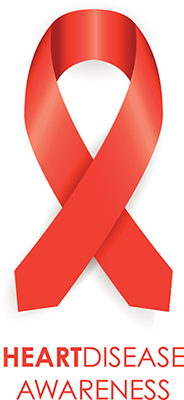 Picture this for a minute, if you are so kind to indulge me. It is 7am on any given Monday, and you hop out of bed, just realizing that you are late for your morning rituals (probably because you hit the snooze seven times). You rush to get ready for work, dress quickly, and run out the door just as fast (skipping breakfast in the process).
Picture this for a minute, if you are so kind to indulge me. It is 7am on any given Monday, and you hop out of bed, just realizing that you are late for your morning rituals (probably because you hit the snooze seven times). You rush to get ready for work, dress quickly, and run out the door just as fast (skipping breakfast in the process).
You run into the office and jump right into the stress that is referred to as “Monday,” trying to feel as if you have caught up to the day, but you really haven’t. You bust butt all day to get things done hour after hour until your weekday is complete. Then, it is off to the gym to brutalize your body, performing the latest and greatest YouTube training session that results in you lying flat on your back, defeated.
But you forgot one thing: You forgot to eat! Or, you stopped by the nearest vending machine or drive-thru, leaving you feeling like crap and tired, so you can dart home to crash so you can start the cycle all over again tomorrow. Or, you got home and ate everything but your hand because you were so ravenous you couldn’t be stopped. These scenarios are not going to lead to positive balance of your life, and certainly will not provide the health and fitness goals many of us are after.
Sound familiar? I hope not, but for a lot of people it probably does. Due to lack of planning and preparation in the scenario above, the individual described is starving and doing some pretty big harm to both the physical and mental being. You can get back to healthy eating by adopting a practice affectionately known in my house as “Binge Cooking,” or weekly food prep. This usually is completed on a Sunday, and takes only a few hours of the day, especially if you streamline the process and have a solid plan of attack.
The ultimate goal of binge cooking is to ensure ample food to cover you throughout the week. You will find that in doing so, not only will you be eating so much better (which is step 1 in any fitness and health-related goal), you will create more balance and find a lot more extra time to focus on bigger and brighter aspects of your life.
We will cover more of this balance-creating blueprint in future posts; now let’s talk cooking! Here are some tips that will make your weekly food prep go much smoother and quicker and be much more enjoyable!
Get Your Mind Right
You have to believe that this is a great opportunity to be healthy and create positive change in your life. If you enter this process feeling it is only a chore, the chance of you faltering and giving up increases exponentially! And I bet your food won’t taste as good, either!
Get the Menu Planned
Know what you want to eat, and what will be the most appropriate for you to eat for each meal, before starting your cooking. Of course this will ensure that you will have food for each meal, but it will also make the cooking process more efficient. You can be doing two things at once, or cutting up everything at once instead of hopping all over the place. Have a plan, and work the plan.
Get the Food
You can’t cook without food, so make it a priority to hit the grocery store and pick up the supplies you will need. I am not going to tell you what to pick up, but I would recommend choosing whole foods as your staples and staying away from processed items. Have your list handy so you don’t forget anything, or pick up items you don’t need.
Get the Right Hardware
Great cookware is awesome to have available, but really anything will do; just have the necessary tools ready to go. Referencing your menu and food list will point you in the right direction as to what you need to prepare all of your food choices. Have it ready, and be ready to use it!
Get the Proper Storage
After all the prep work and cooking are complete, you are going to need to store the food so it is ready to go when you are. Think individual portions when loading your storage containers for all of your meals. With that being said, because portion sizes tend to be too large for most, have more small containers than large. It will help keep you on track as well as make storing and carrying easier. Spend some time on this step; it will be one of the most important!
Get Help
If you are thinking to yourself, “This all sounds great for you, but you don’t have any kids.” You are right, I don’t. Make them part of the process. From the get-go, they can help you plan the meals, go shopping with you, and help prepare and store the wonderful foods you have created together. There are some huge positives happening there: learning about proper nutrition, budgeting, being amongst other humans, and most importantly spending time with the people you care most about.
I think the tried-and-true saying works best here, and that “failing to plan is planning to fail.” Take some relatively easy steps to ensure your nutrition stays the course throughout the week (and weekend, for that matter). You will find when you plan well for the big things, such as your nutrition, the smaller things will take care of themselves. When attempting to create some balance in your life, tackle the big things first!
This blog was written by Tony Maloney, Health Fitness Specialist and Fitness Center Manager. To find out more about the NIFS bloggers, click here.


 There is no better time to get your cardiovascular health on track than right now, during heart health month! February is
There is no better time to get your cardiovascular health on track than right now, during heart health month! February is 
 This is the time of year when everyone seems to be getting sick. A head cold, the flu, a constant cough, a sore throat, chest cold, sinus infection…you name it, it’s around. I know when I am under the weather, one question that comes to my mind is, “Should I work out, or should I just let my body rest for a few days?”
This is the time of year when everyone seems to be getting sick. A head cold, the flu, a constant cough, a sore throat, chest cold, sinus infection…you name it, it’s around. I know when I am under the weather, one question that comes to my mind is, “Should I work out, or should I just let my body rest for a few days?” For people new to fitness, creating a healthy body image can be as challenging as creating a workout or diet plan. What do we consider healthy and why?
For people new to fitness, creating a healthy body image can be as challenging as creating a workout or diet plan. What do we consider healthy and why?
 If you are anything like me, the new year comes with lots of “I’m going to do this (fill in the blank) better than I did last year,” or “I am starting a new workout plan for the year,” or maybe “My goal this year is to ________.” Then mid-February hits and all those New Year’s habits you planned to start, goals you were working toward, or things you were going to do better on have fallen off the radar.
If you are anything like me, the new year comes with lots of “I’m going to do this (fill in the blank) better than I did last year,” or “I am starting a new workout plan for the year,” or maybe “My goal this year is to ________.” Then mid-February hits and all those New Year’s habits you planned to start, goals you were working toward, or things you were going to do better on have fallen off the radar. Wearable fitness technology
Wearable fitness technology
 Nothing can replace my four years at
Nothing can replace my four years at 



